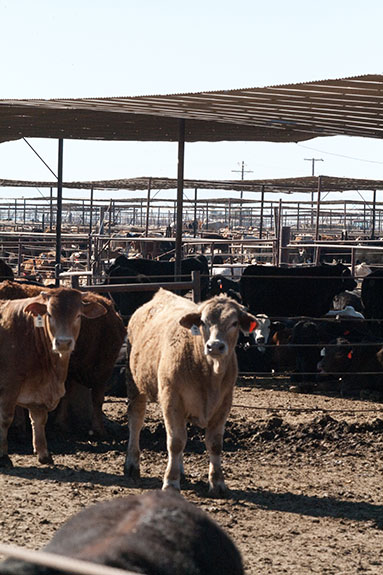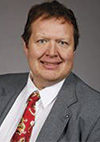Open feedlots can receive many of the same benefits by providing shade during the summer months.
Dark-colored cattle will benefit the most from shade and are often the type feedlots prefer to feed.

The remainder of this article will discuss the following considerations when designing shade for open lots: cost and benefits, space and location, construction and management.
Cost and benefits
The cost of shade cloth is about $.20 a square foot and the recommendation would be 20 square feet per head for a total of $4 a head.
The post and support structure and labor to build it will probably cost twice that much for a total of $12 a head.
Reducing the heat death loss by 1 percent would pay for the cost of the shade in one year, with better feed conversion and more even intakes all bonuses.
The cattle will seek out the shade, allowing the operator to better manage the location of the manure and proximity to the feed and water.
Space and location
Cattle will rest under the shade during the day and the shade should be 20 square feet per head. It should be located close to the feed bunk and water supply so that the cattle will be easy to observe and limit exercise on hot days.
This area will receive more waste accumulation making it cooler with the evaporation but should also be in a convenient location to box scrape on a regular basis.
Construction and management
The considerations when constructing the shade are going to be building it high enough so that all equipment can pass under it with sufficient clearance.
Posts and poles need to withstand the rubbing of the cattle and the equipment bumping it.
In many cases, it is constructed with recycled structural wood or steel that is on the farm. The shade should cover 80 percent to 100 percent of the area.
Shade cloth is often held up with cables and ropes and stretched rubber straps. It is not going to withstand the 80 mph winds that a normal building design would.
There are reports of recycled metal roofing hurting cattle in high winds when built for shade. Remove any sheets that are loose to prevent cattle injury.
In most cases, there needs to be at least 2 feet of additional clearance between post and the box scraper to facilitate cleaning under it with clearance on the ends to turn.
Shade cloth is often removed and stored after Oct. 1 when the weather is cool and the risk of high winds goes up.
If you have specific questions call your extension and outreach beef specialist or agricultural engineer. ![]()
—From Iowa State University Extension e-newsletter Growing Beef, Vol. 3, Issue 12, June 2013
PHOTO
Open feedlots can receive benefits by providing shade during the summer months. Staff photo.







